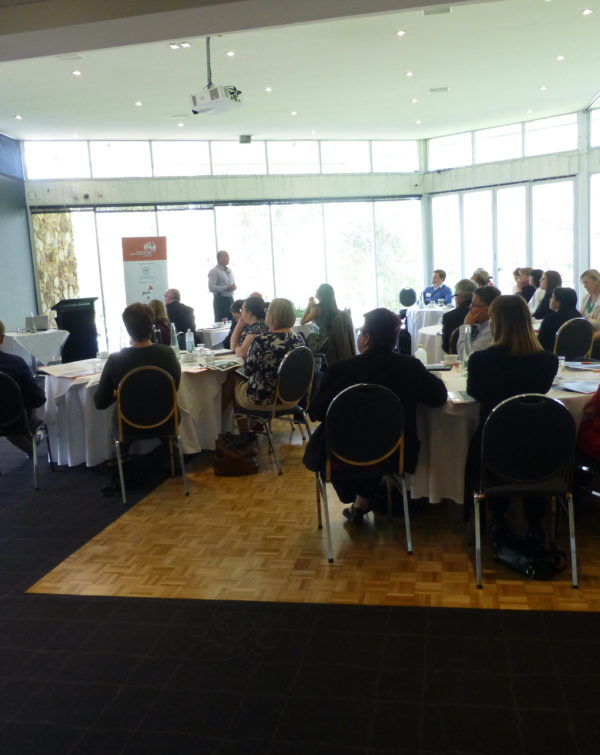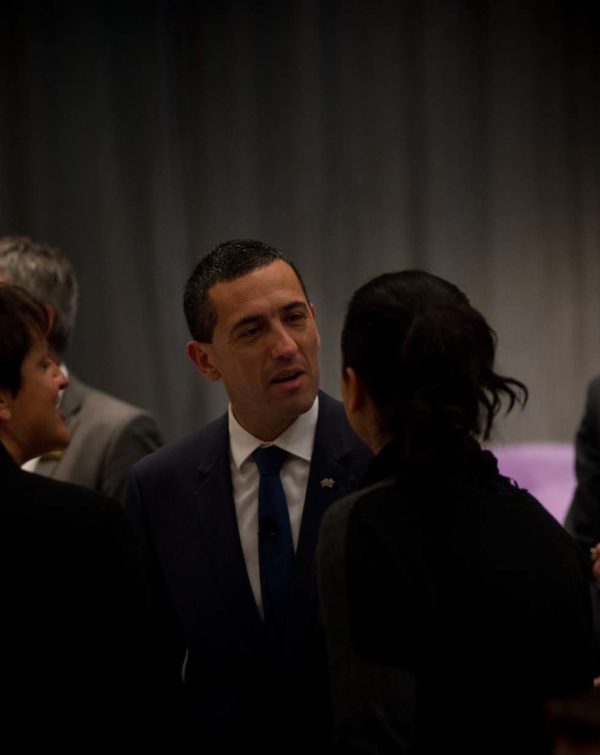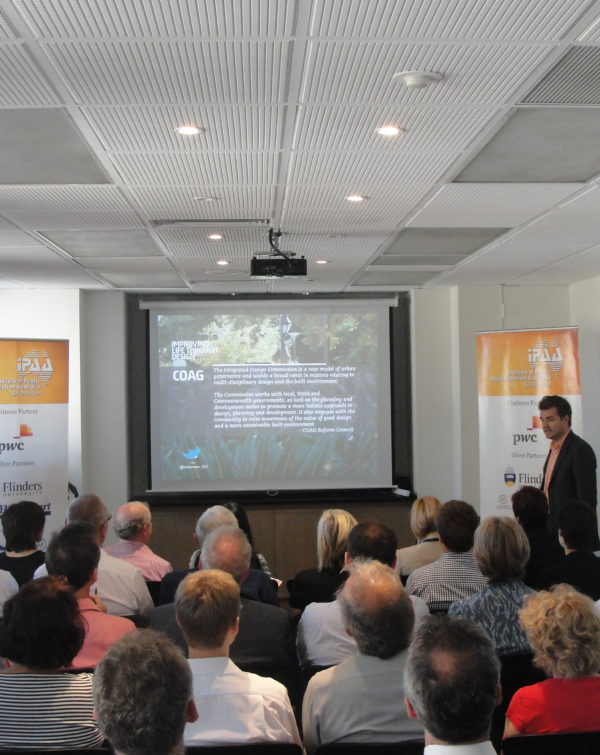Presented By Paul Leistner and Peter Mckinlay
Community or neighbourhood governance is emerging as an important new way in which governments works with communities and neighbourhoods.
This one day workshop will provide an overview of good practice internationally looking at both statutory and non-statutory forms of community governance. It will show how different stakeholders are taking the lead ranging from councils, to higher tiers of government to the private sector, all focused on working with communities to improve community outcomes.
At the end of the workshop you will have a good understanding of the options available for you and your agency. Benefits will include learning how community governance can assist the better management of programmes and expenditure, improve relationships with citizens and communities, and enable better outcomes for your communities.

The October -December 2014, Edition 40, explored the facing up or facing off of the public vs private sectors. Articles in this edition included:
The full issue of ‘Public Administration Today’ is available for free below.

IPAA proudly presented Tim Horton, South Australian Commissioner for Integrated Design, at an intimate forum on Whipping posts and deniability: why failure can be a sign of success. Nearly 40 people attended the event, which was booked out virtually overnight.
In his role as South Australian Commissioner for Integrated Design, Tim provides independent advice to the Premier and Cabinet. The Integrated Design Commission is Australia’s first state level multidisciplinary design, cross-government advisory team and Tim is an award winning architect and urban designer, with experience spanning the public and private sectors in Australia and internationally. Throughout his career, he has been deeply interested in civic space and the role for design in shaping human-centered urban policy and it is this focus that guides his advice to the SA Government. Tim has also held positions as state President of the Australian Institute of Architects, and Chair of the National Practice Committee of the Australian Institute of Architects. He has acted as a member of the editorial board for the Australian Urban Design Protocol and is currently a Board member of South Australia’s leading craft and design body, the Jam Factory.
The event opened with Tim’s talk and presentation, which were followed by a Q&A session facilitated by IPAA’s Divisional Council Member, Erma Ranieri, who is also Deputy Chief Executive (Strategy, People & Culture) for the Department for Manufacturing, Innovation, Trade, Resources and Energy, and who was made an IPAA National Fellow late last year for her services to the public sector and to IPAA. The event wrapped up with a networking session at which all event delegates were provided the opportunity to chat with him regarding their own particular interests.
As my bio says, I’m an architect, but what it doesn’t tell you is that I’m the son of a public servant. When I was about 9 or 10 my father was the Secretary of the Department of Housing & Co-operatives in NSW. Tagging along with my parents to the opening of a new Building Society in Wauchope or a Dairy co-operative in Ballina was part of growing up. He moved later to head the Department of Finance, until he was spectacularly sacked by then Finance Minister, Bob Debus, in what was called the No Minister case. “Departmental head stands firm against ministerial interference in senior appointments” or something like that was the headline and Terry Willisee Tonight covered the outrage. An Opposition leader on the ascendency called Nick Greiner took up his case. And for a week, I moved from a gangly nerd to school celebrity.
It wasn’t till I was appointed as Commissioner for Integrated Design that this family backstory came back to me. It took place in 1984 and possibly the beginning of public service reform that has brought both good & bad long term and independent, sure. But did this also bring inertia? Has the reality of short term contracts limited our capacity to look beyond political cycles? It was a lesson in the interaction of politics with government, in the difference between the two and the need for mediating the world of politics and design. This is a combination that’s more common overseas than in Australia. But times are changing.
Anyone who works in public administration knows a bit about this and suspects that we could do it better. We all sense that individual commitment to public service delivery often outperforms the capacity for the system to effectively translate that individual passion into a collective outcome.
For all the talk of ‘smashing stovepipes’ (as the Property Council’s Peter Verwer has a habit of saying), silos haven’t gone anywhere. And if the silo-ed approach of separate territories isn’t working, the question is: what new approaches might help us work across levels of government and agencies? Can design-led thinking help us to work across those levels for better outcomes?
Can a design-based process help inform, engage and educate a community at a time of enormous change? Can design based thinking, which is always (or always should be) about humans needing help to connect sometimes abstract policy ambitions to the daily lives of South Australians? How can we link macro policy objectives to the stories of individuals? And what can policy makers learn from successful product developers like Apple and Dyson?
Understanding human need, in fact, anticipating human need is what makes Apple and Dyson successes. Neither uses blind focus groups. Neither undertakes surveys. So how do they know? They observe real daily human behaviour and interpret it. It’s called ethnography. They observe. And they test. Or rather, they invest in prototyping. Dyson prototyped 5,127 versions of its famous vacuum cleaner before getting to the one you can buy today. Prototyping is about committing to a model, a physical trial, and about committing before you’ve resolved it all. This is because it’s only by allowing the model to fail that you know where it’s failed.
This is something that’s inherent in the design process. And it’s essential in translating a company’s ambition for new product development through the humanity of individual need.
Design based thinking is not just seen in our cities. Arguably it’s rarely seen in our cities. It’s more seen in successful enterprise & business. Gillette sells x million razors a week worldwide. Its razor refills are sold with a 3000% mark up on manufacturing costs, because it’s got a well-designed product that keeps reinventing itself. Sales are partly driven by branding & marketing, but are only made possible because the product is safe, easily used, designed for the face and the hand. It is comfortable, reliable and available anywhere. And by understanding the need is different in developed economies (where a wet shave is possible with running water), and in developing countries where the dry shave is more common, Gillette continues to expand. It claims over a billion men shave every day using technology they invented. The entire Mach 3 system, protected by 35 patents, cost Gillette $35 billion just to bring to market. By investing in design innovation, the product improves, creating markets, growing market share. But nowhere is the design innovation phenomenon more evident than in the Apple iPhone.
What does the iPhone have to do public administration and what does it have to do with 5000+ Design is too often seen only for the product it delivers and not for the process that delivers it. Design is too often thought of how something looks, not how something performs.
5000+ is a project of urban renewal and city activation that crosses 8 council boundaries, 3 state departments, and 2 agencies at a federal level. At the outset, this national pilot for design based thinking in cities sought to re-engineer the whole architecture of govt. Drawing analogies with the iPhone, we originally had ambitions to ‘take the back off’ and reinvent the urban equivalent of the ‘cell phone’ anew.
But since then we’ve taken another leaf out of Apple’s playbook. What if we didn’t redesign the mechanics but redesigned the interface? Instead of a new motherboard, a new interface; instead of a new back, a new front. Could we redesign the interface as a proxy for a set of other reforms that necessarily follow? Redesign the interface and the architecture of decision making and service delivery might shift in response.
This is where design testing comes in. Traditionally, we’ve addressed public policy and city shaping through a series of separate exercises that classify ‘engagement’ as isolated from ‘design and planning’ and ‘development’ as separate again. And then we divide ‘development’ from ‘operation & maintenance’. Neatly cut up like this, separate agencies and separate spheres of government play a defined role, but rarely sharing the learnings of the last stage before handing over to the next. Time is a measure of information loss, not gain or growth.
Space here doesn’t allow a description of the 5000+ project. In short, it’s intended to deliver new ways of thinking about inner Adelaide backed by strategies for how we might get there. By working with the 8 local councils (including city government), state agencies and the Australian government, we can move across territory with their blessing.
But there are some lessons in 5000+ which may be of interest to those in public administration. Like any project, you have to stay alive to the unintended consequences (good and bad) of any policy, program or project. Monitoring and evaluation methods are important (but hampered by disaggregated data held closely in separate, enemy territories). We’ve learnt a few things from 5000+ which may help tackle wicked problems confronting you.
These are broadly headlined:
5000+ is important for many reasons. As a brand that isn’t owned by anyone, so it gives cover to ways of working; explorations and innovation that – if they blow up – doesn’t represent a risk to any one partner.
It also means tensions can be externalised. “It’s not me. It’s not you. It’s this ‘5000+’ we need to work on that causing us grief.”
5000+ is about modeling more collaborative ways of working. Getting around a project and being permitted to think dangerously, beyond the forward estimates and on behalf of someone else, such as another agency or a private sector interest. And it’s about being allowed to prototype, until it breaks and then trying again, for Version 2.0.
We’ve found it’s not enough to have people in the room. You need to have the right people in the room.
You’ve got to do the thing right (with nod to Tim Williams from whom I stole these words).
The right attitude is important, which means, the right people. So who are the right people? People who can:
